Angel Gomes has been one of the most exciting young talents at Manchester United. However, he still has not proved his full potential yet and it seems that Man United do not have the patience to wait. He has played in the U23 Premier League and played some first-team games in the UEFA Europa League. In the EPL, he has only come in as a substitute for the last minutes. The games analysed will be from the Europa League games he played.
This is why he has decided to move to Lille in Ligue 1, which is known to nurture young talents. Even though he is not a signing for the immediate future, his signing proves Lille’s belief in him. He was recently loaned out to Boavista in the Liga NOS and in this tactical analysis, we will do an analysis of why Lille signed the promising 20-year-old.
Gomes is a player of small stature with incredible individual technique and spatial awareness. He can play in many attacking positions, showing his versatility. In this scout report, his attributes will be analysed, and we will see in what tactics he plays the best in. Gomes has to prove this season in Portugal what he had not shown at Manchester United, and that is his ability to take his game to the next level in the professional game.
As a left-winger
One of the positions he can play is left-winger. Most of the time as a winger, he stays out wide as much as he can. This is to add width to the attack and to stretch out the opponents. Consequently, there will be more spaces through the middle which is from where Manchester United ideally wants to attack to create the most danger.
Also, with him being out wide he becomes a much easier passing option for his team and if they pass it to him, he would have much more space than if he was closer to the middle. In the image below, it is clear the amount of space Gomes is in.
Moreover, we can also see how much space there is for Manchester United players through the middle, thanks to the width generated by the wingers.
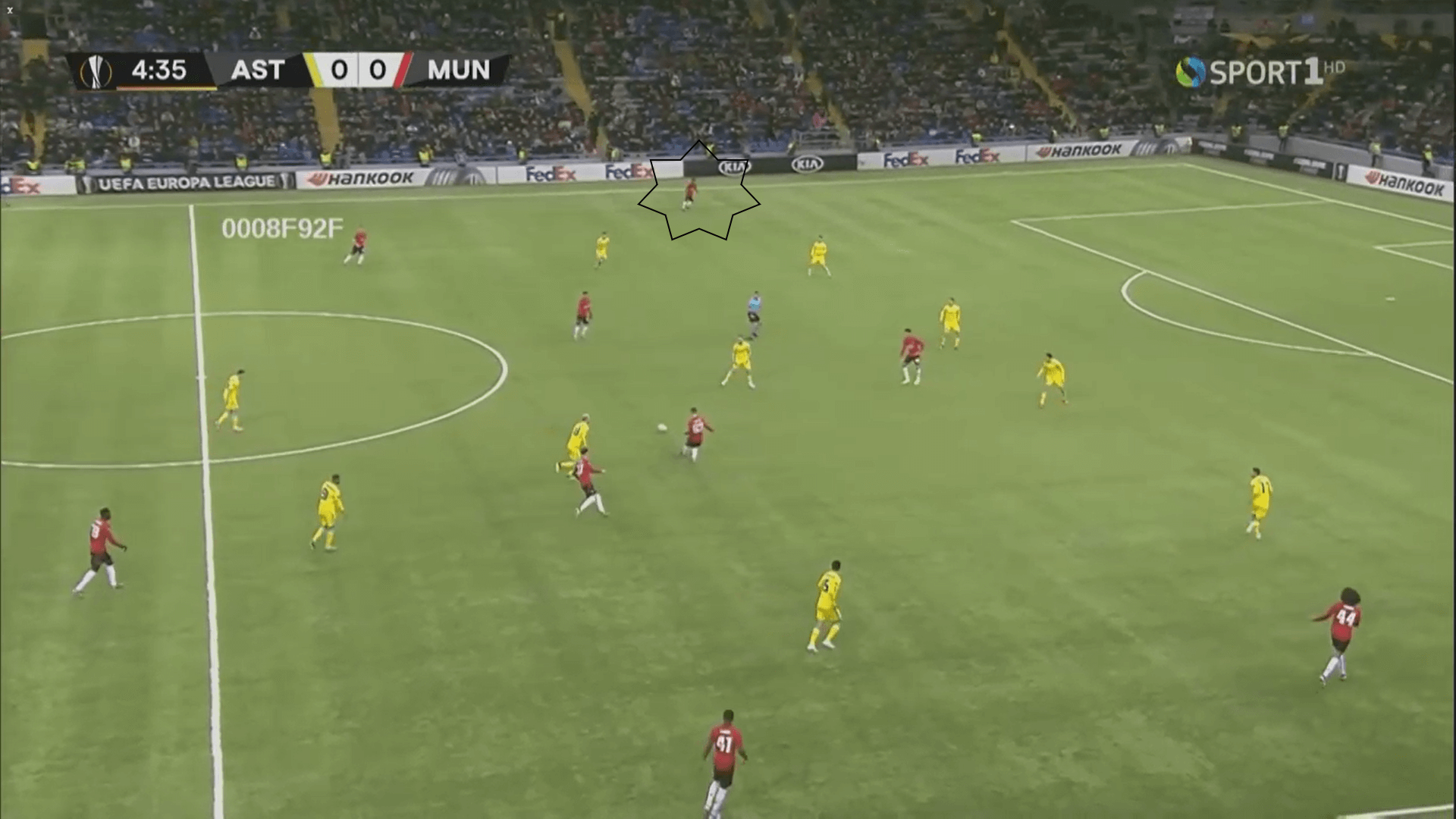
However, at times he goes inside as a winger. This is to give the whole flank to the left-back and for him to be inside as a helping option if needed. Since Manchester United have offensive left-backs, this movement from Gomes encourages the left-back’s incorporation to the attack. Through this, they achieve one more man in the attack to try to generate superiorities in the wing.
In the example below, Gomes tucks in the middle so that the left-back can drive with speed into the whole flank. If the left-back advances more, the player marking Gomes would have to decide which one to mark, and depending on that, spaces would be created for the team on that flank thanks to the 2 vs 1 superiority.
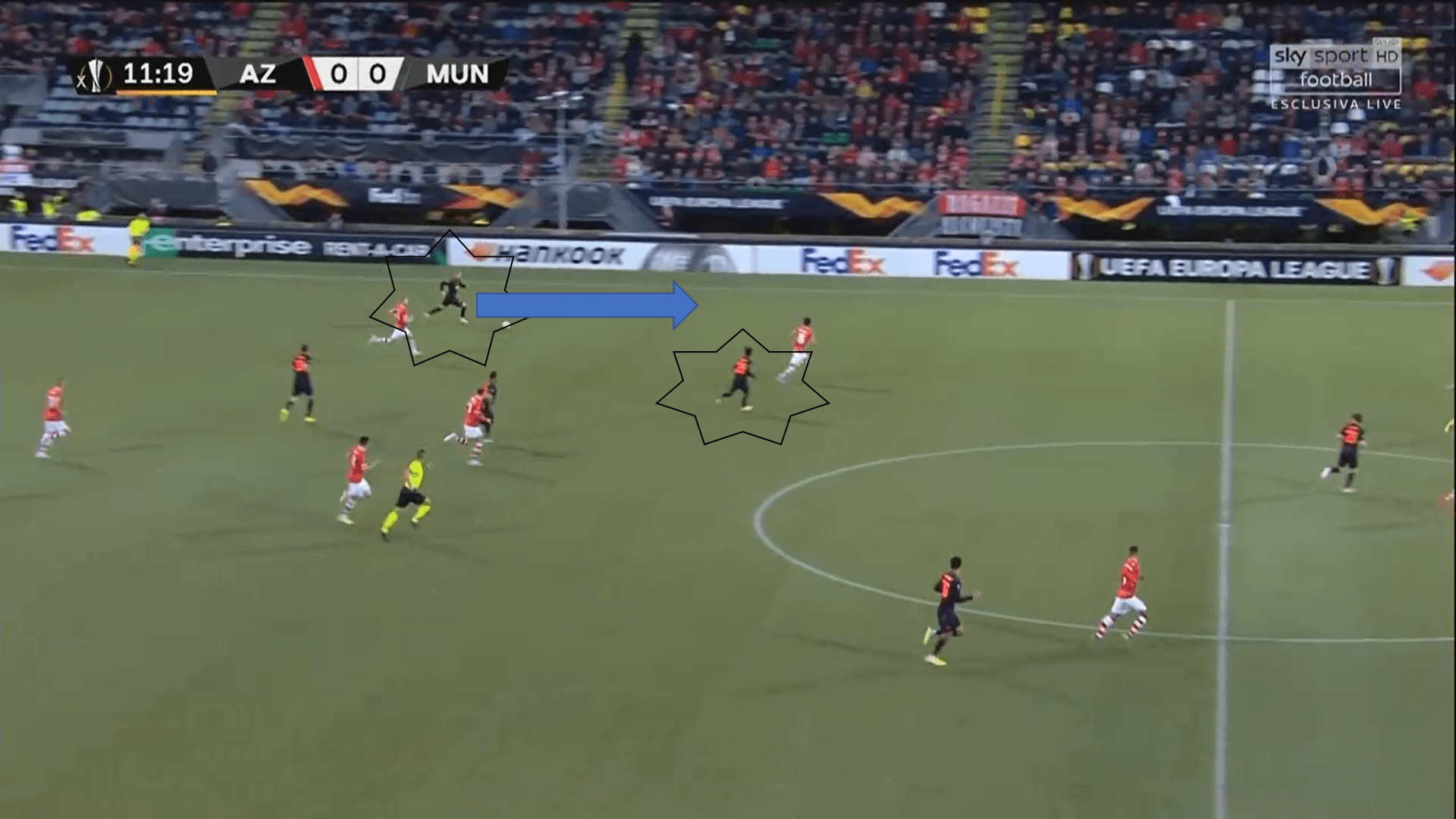
Another way that he gives space for another teammate is by starting out wide and dropping down to receive. When the attacking midfielder or striker sees this movement, he runs into the flank. Since Gomes has attracted the opponent’s right-back with the movement, it leaves a big space in the back.
It is evident with the image below how Gomes creates space by drawing the full-back to him. It is also clear how the attacking midfielder has surprised his marker by making this run as he is placed at least one metre from him.
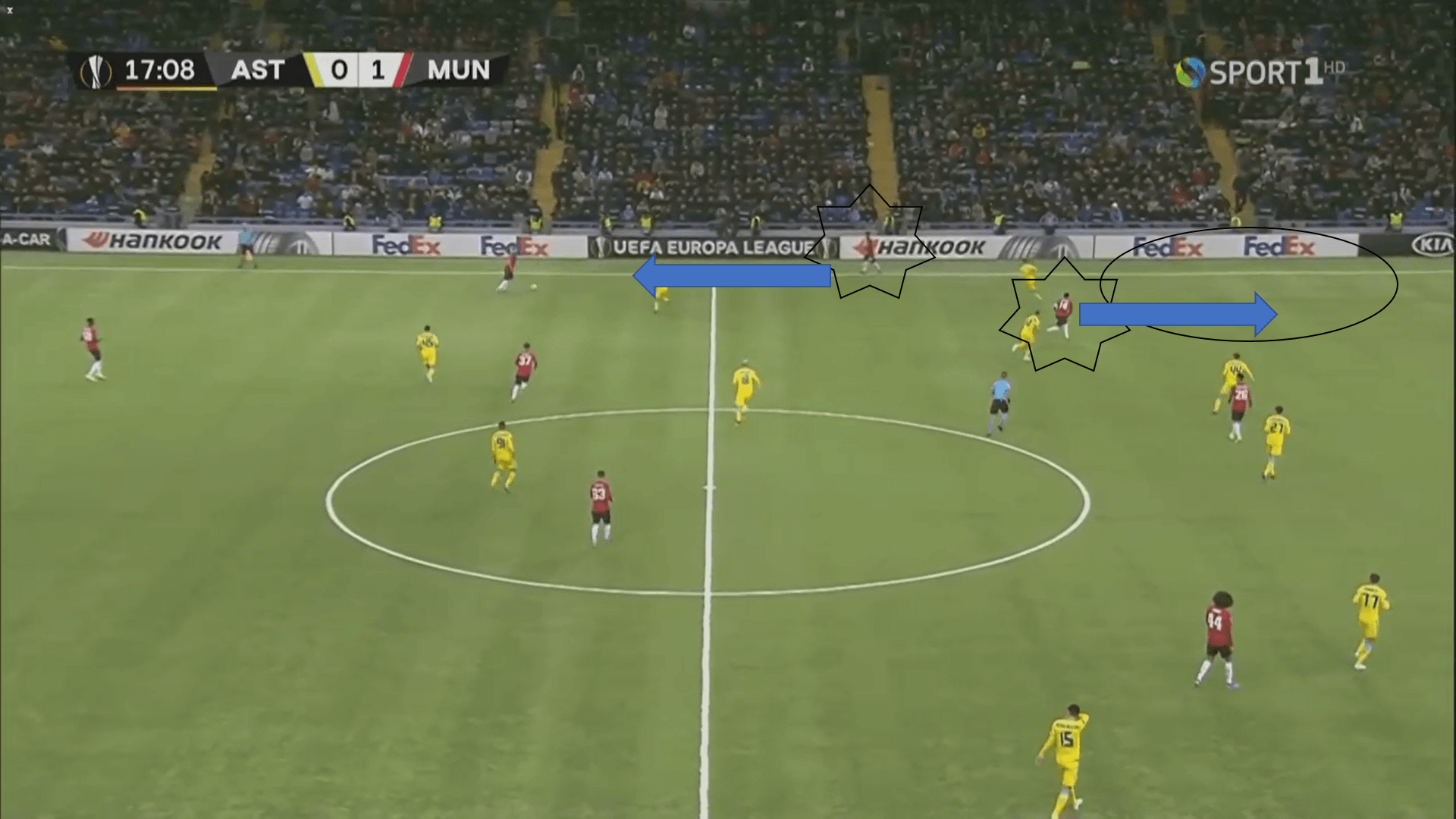
Being a winger, you have defensive responsibilities too. Gomes does not ignore these and works for the team, sometimes reaching his own area to defend. If he does not go defend and the opponent full-back advances, it would mean a 2 vs 1 situation against the Manchester United left-back which could be very dangerous.
In the example below, we see how far Gomes has dropped down to help his team.
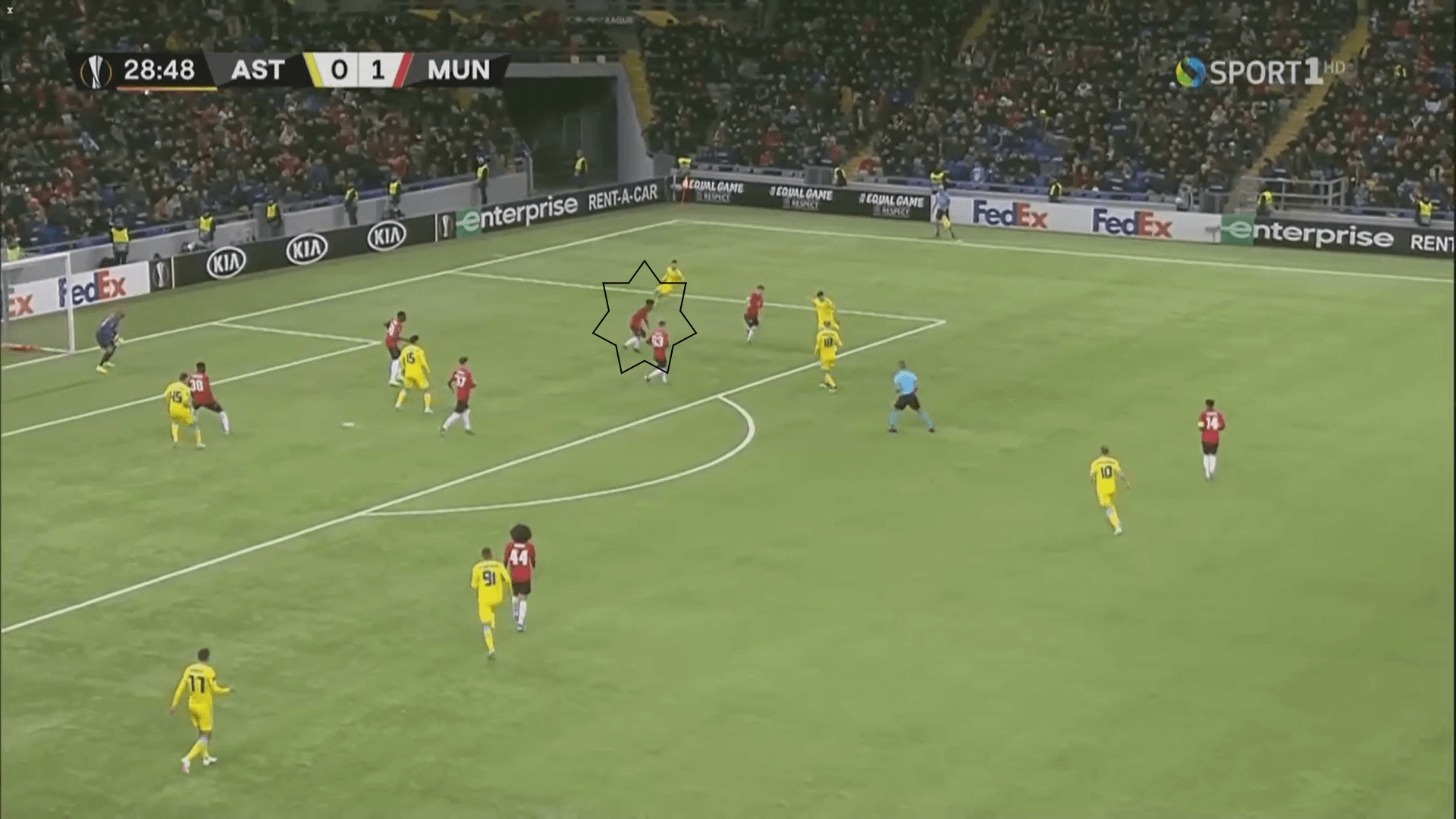
When attacking on the wing, he prefers to cut into his right foot to be able to get a cross in or shot. He has the technical qualities to open up space for himself which means he is successful most of the time doing this as he does in the image below.
However, after cutting in a few times, the defender can anticipate what you are going to do, therefore Gomes should diversify in his dribbling to be even more dangerous in the attack.
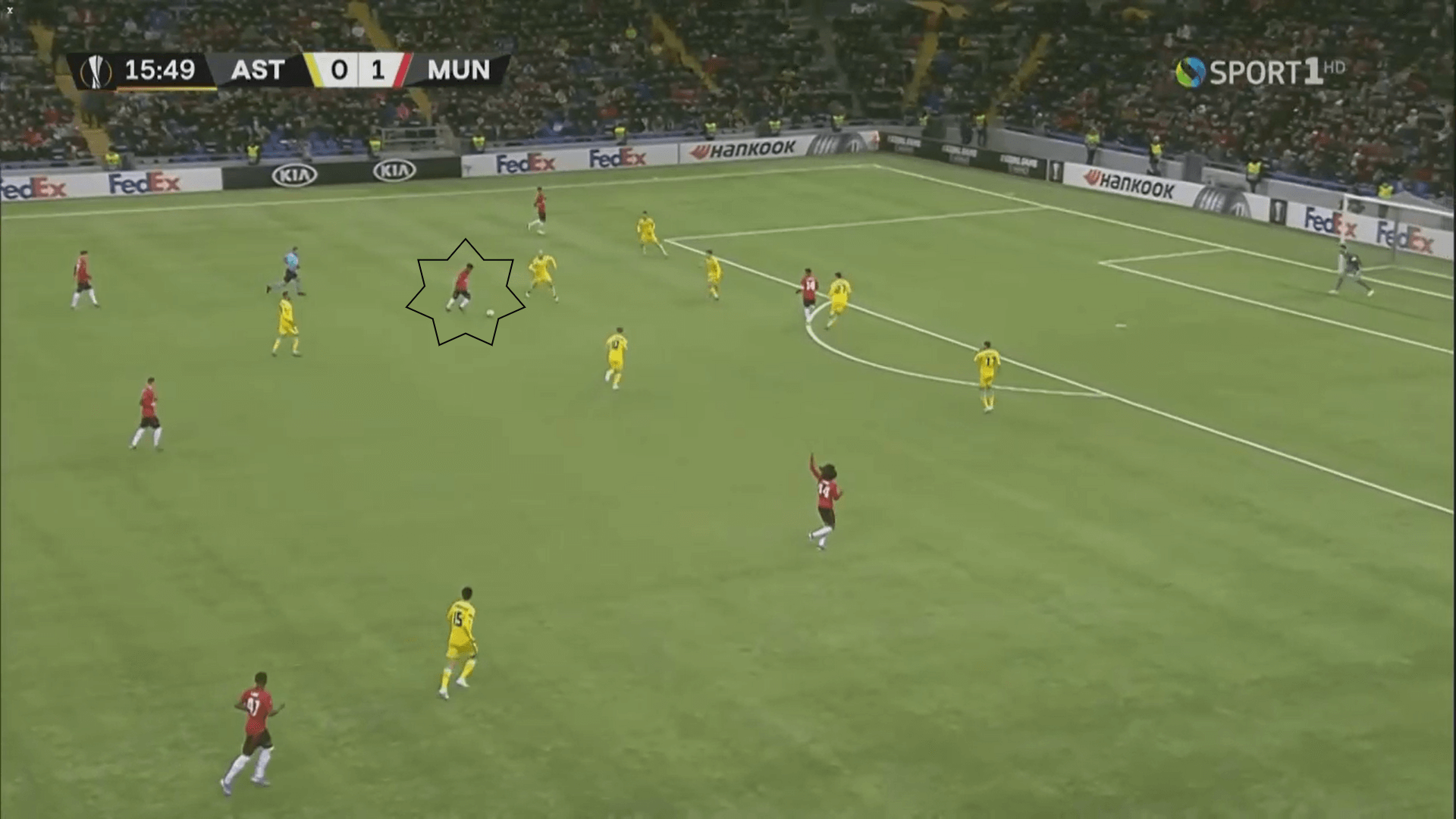
Pressure as a winger
When pressuring as a winger, Gomes does something unusual. When the ball is on the other side, he goes to the middle to pressure the opponent centre-midfielder who is trying to help. This is useful because it cuts out all the close passing options that the opponent on the ball has which increases the likelihood of an interception being made.
The following image proves how Manchester United is surrounding the opponent in possession and Gomes is coming to help by marking the nearest passing option.
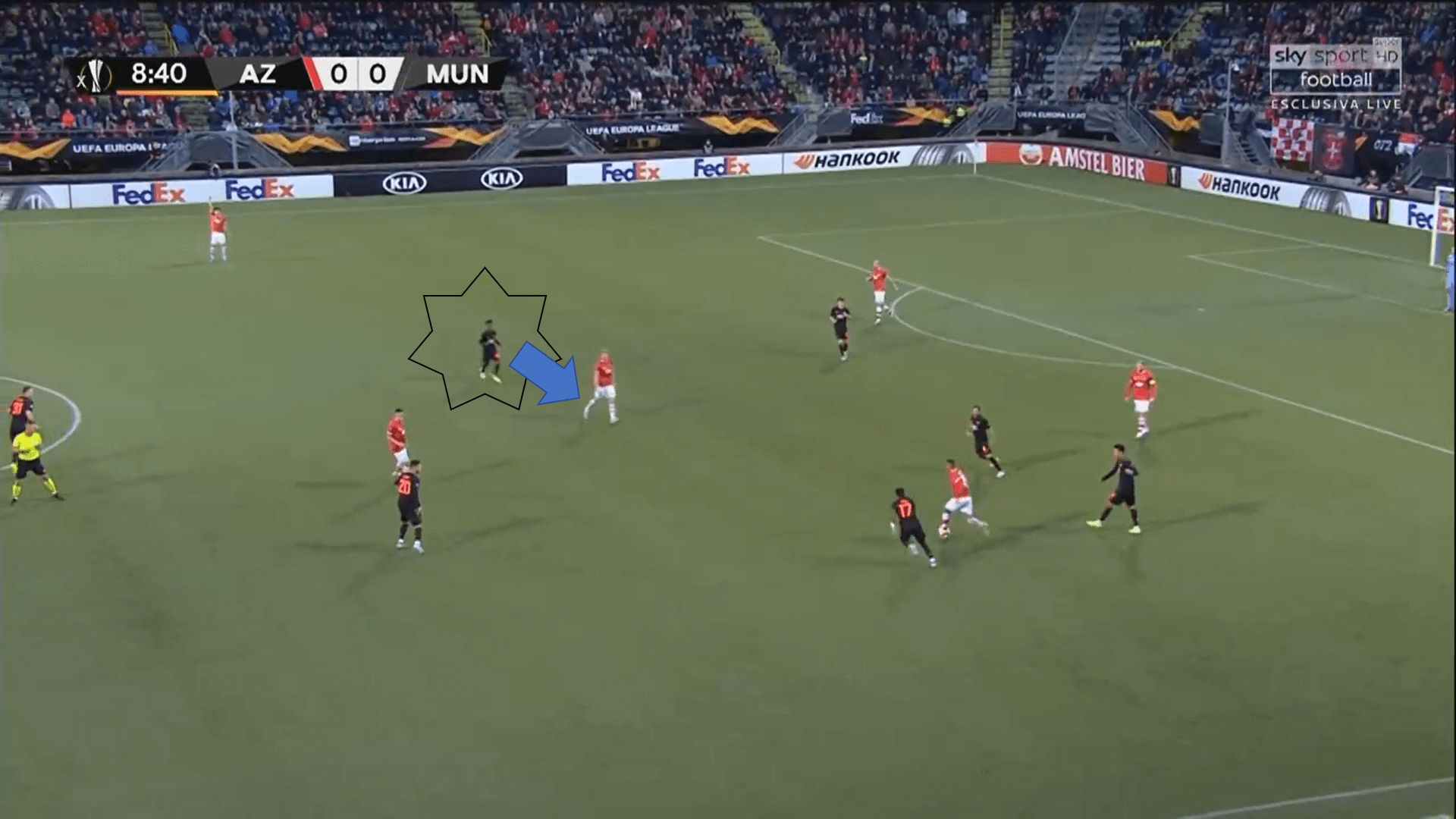
However, this pressure has to be done well by Gomes and the team because if not, he is leaving the opponent right-back completely alone with lots of space.
The example below shows how the opponents have managed to get past Gomes’ pressure in the middle and now they can pass it to the right-back with space to run into. This is dangerous as it breaks Manchester United’s pressure and could lead to a 2 vs 1 situation on the wing.
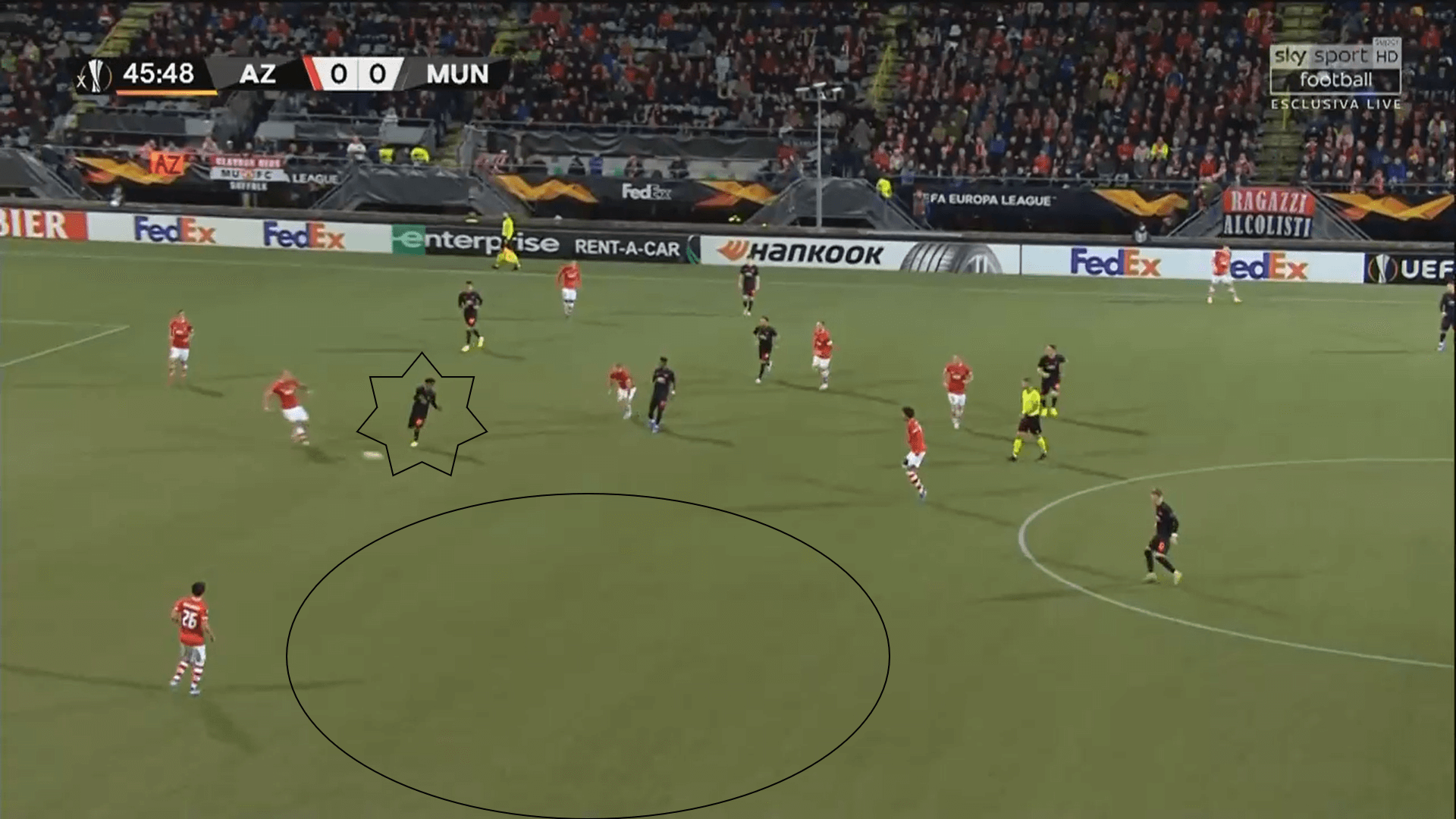
The other time when he decides to press high is when he sees that the opponent is receiving a pass with his back turned to him or is controlling the ball without looking at Gomes. These moments imply that Gomes will surprise the opponent as the opponent will not be aware of him coming.
They rely on him for this as he is a quick player, meaning he can run that distance in a short time to be able to fully surprise the defender and tackle the ball. If he was slow, he would come late to the defender and this defender would have time to turn around and break the pressure. Therefore, this pressure suits his characteristics.
For example, in this image, the centre-back is receiving the ball and is not looking at Gomes who is sprinting to him.
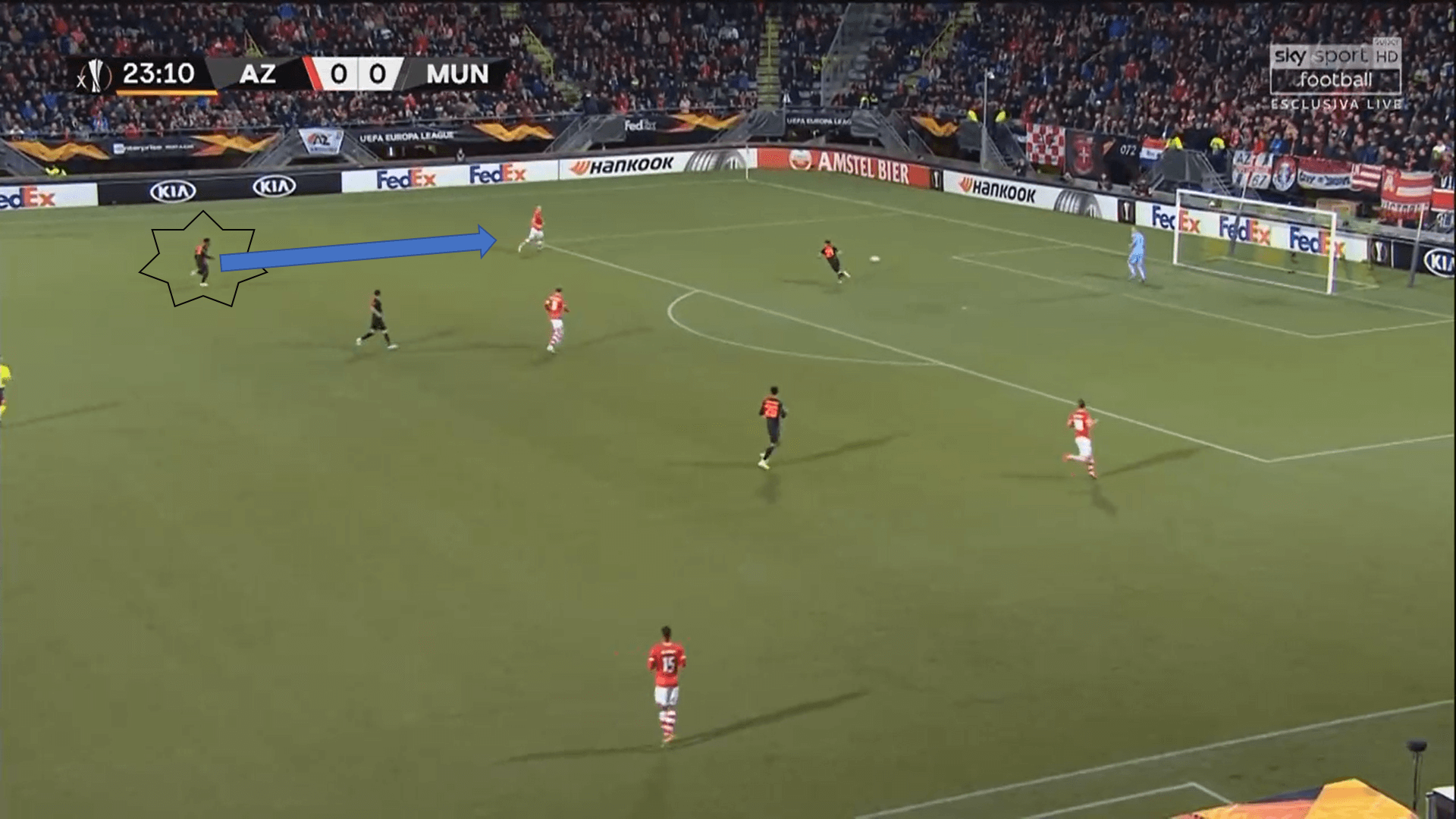
Transitions from winger to attacking midfielder
Since he can play in both positions, Ole Gunnar Solskjær took advantage of this and used him in both positions during games to confuse the opponents. Through this, Gomes and his teammates understood when to switch positions. He changed positions with the striker or the attacking midfielder.
The movement from winger to attacking midfielder is the most effective because he goes into the middle from the wing, causing surprise to the opponents. In the below image, we can see how smooth the transitions are.
Without talking, Gomes goes running into the middle to become a passing option in between lines. Therefore, Daniel James sees this movement and takes up the winger position.
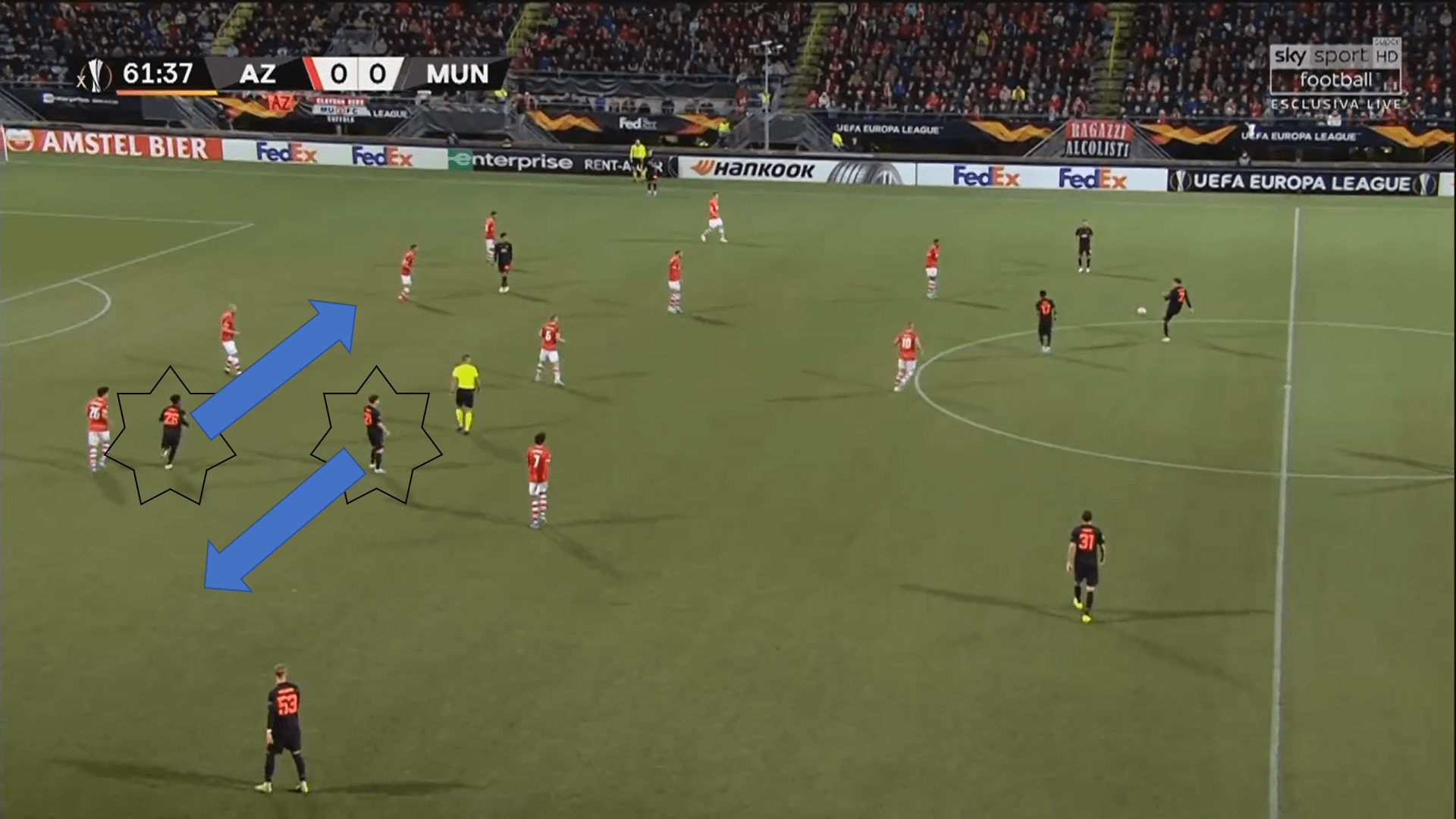
As an attacking midfielder
In this position, Gomes has to be smarter with his positioning because he is playing through the middle. It is a close space with many opponents but with his technical ability and intelligence on the pitch, he does well.
Usually, he positions himself between the midfield line and the defensive line. He does this because if he gets the ball and turns around, he can create many attacking opportunities. Since attacking through the middle is the most dangerous way, Gomes tries to get in these positions often.
Another reason why he gets in these positions is because he is able to turn around with his first touch very well. With his close control, he goes from receiving the pass to attacking the opponent’s goal quickly.
The image below is an example of Gomes receiving a pass through the midfield. He has made himself a good passing option through his smart positioning.
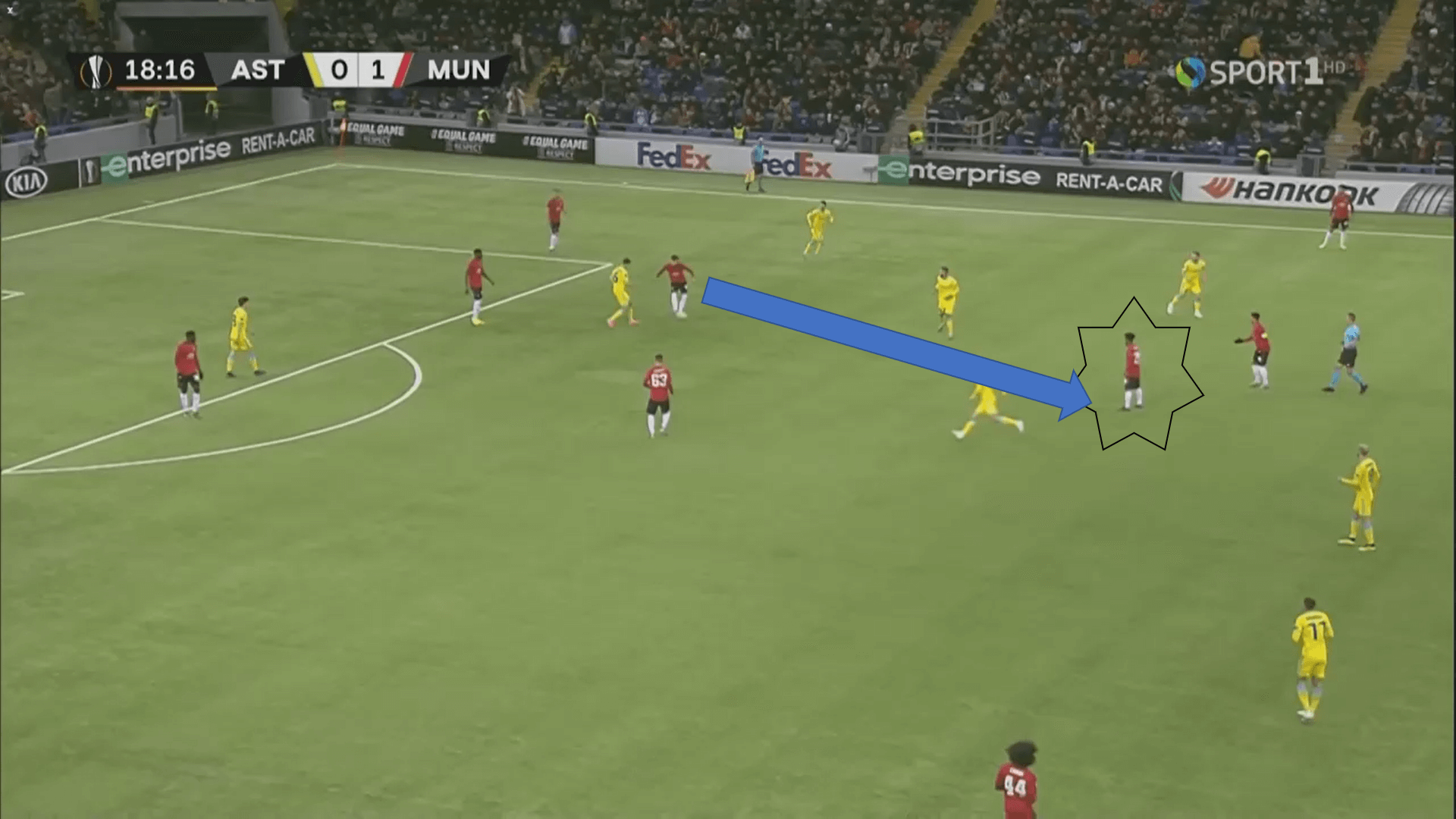
However, sometimes when the opponent is in a very low block and he can’t receive the ball through the midfield, he drops down to help in the creation of the play. He drops down because he adds more quality in the build-up than the centre-backs, improving the calibre of the play.
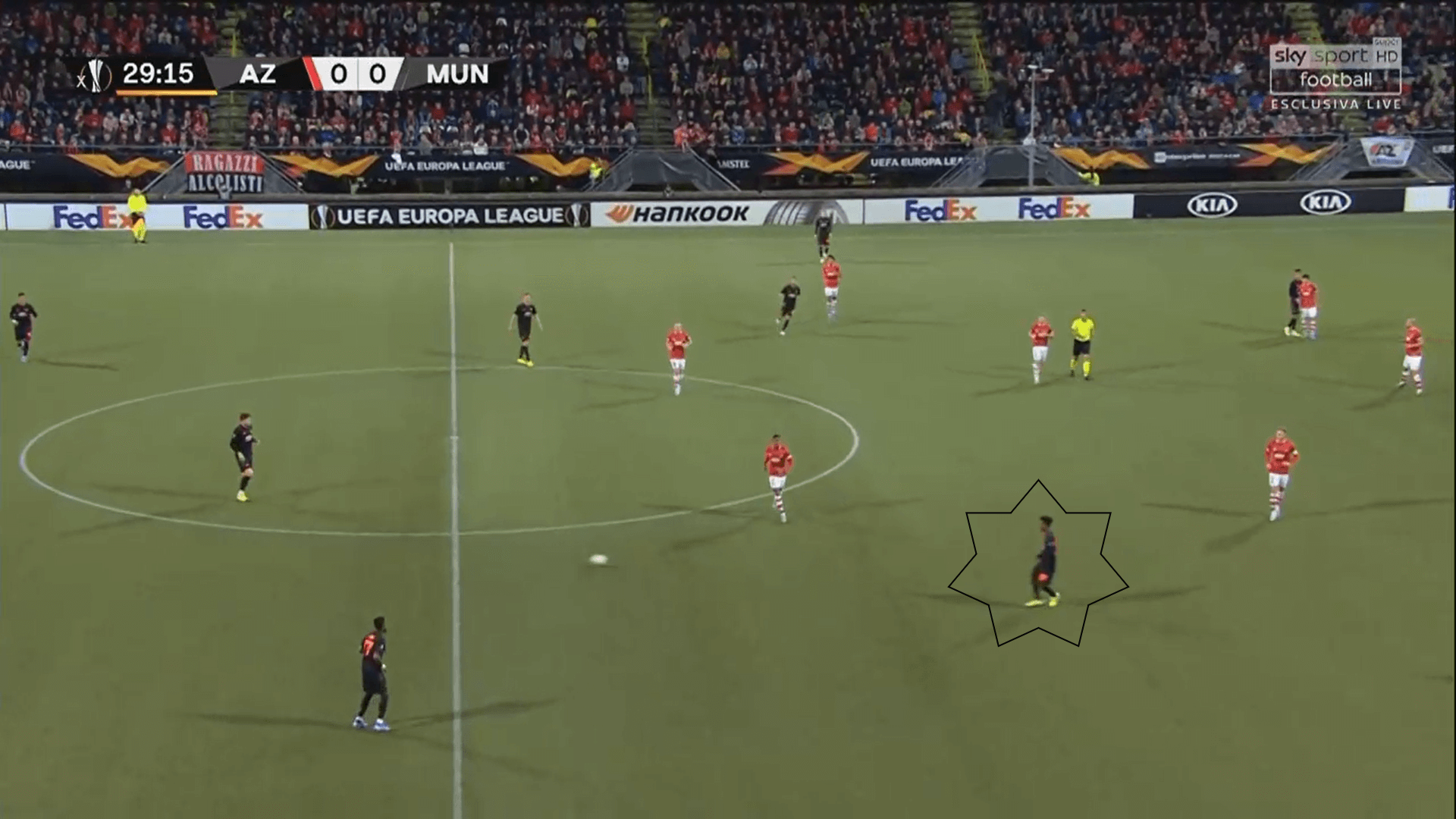
When he plays through the middle, he can also associate well with his teammates in closed spaces. This is very important because the middle is the most packed area and so playing with quick passes is key to overcome this.
As we can see in the image below, he and Juan Mata are surrounded by opponents. However, with a quick one-two between them, they are able to break this pressure and continue the play.
This is very useful because if they manage to get out of these situations, you eliminate many players from the play. Therefore, they can attack with more superiorities and more ease.
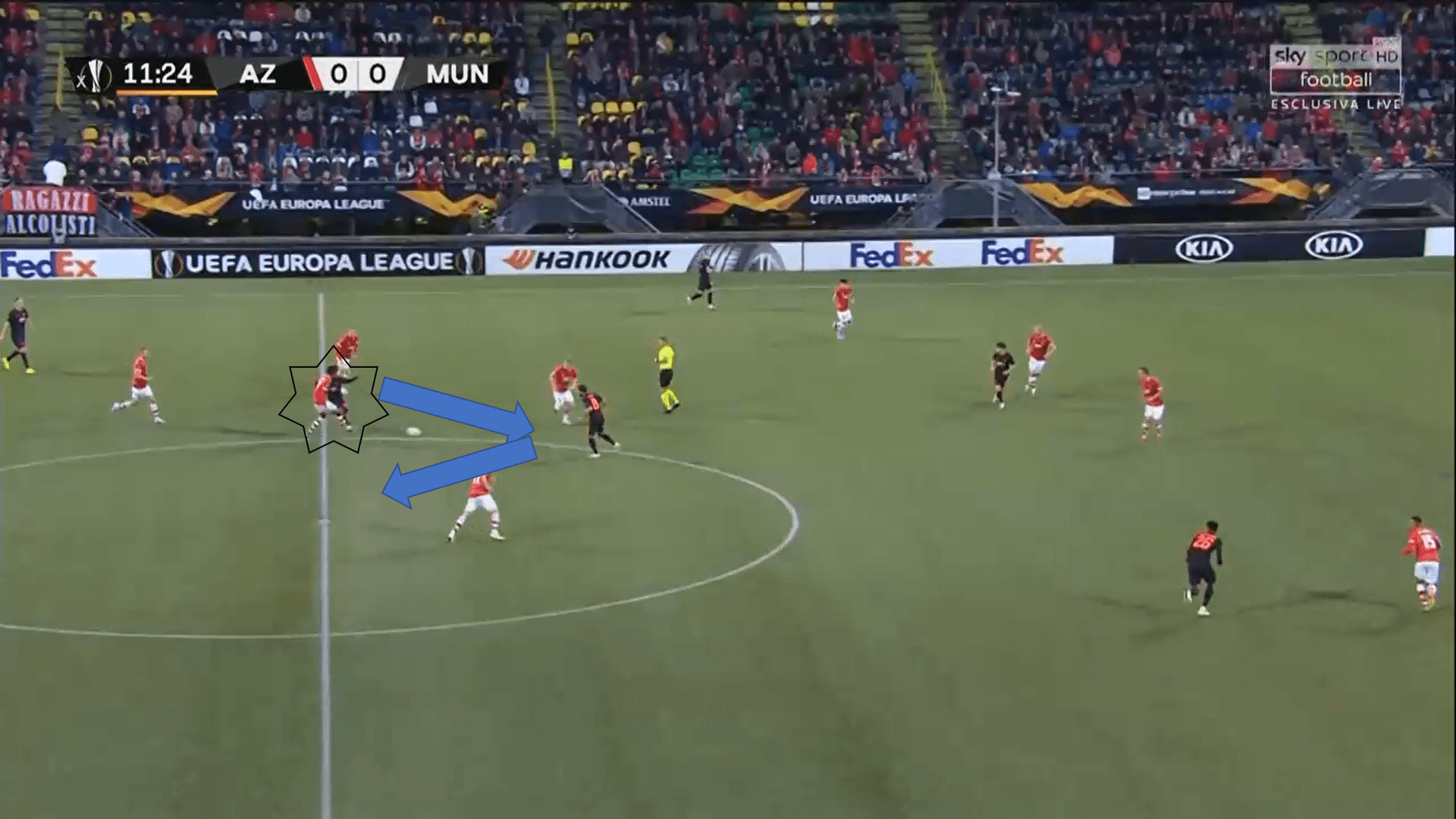
Conclusion
Overall, Gomes will need to perform at Boavista this season to confirm why Lille decided to take a chance on him. However, we have seen that he is intelligent with his positioning on the pitch and has great technical abilities. All of this and his versatility will make us have high expectations for him and hopefully, he can impress Lille’s coach in the future.




Comments